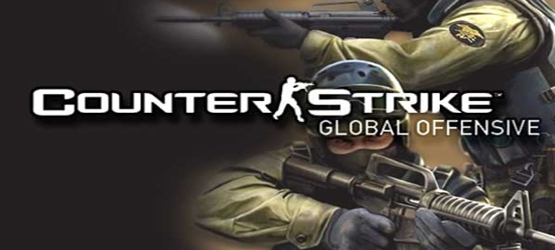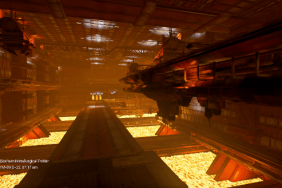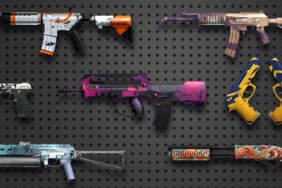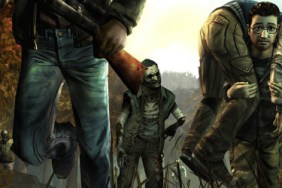Modern shooters have become one of the biggest markets within the games industry, as games like Call of Duty and Battlefield have spread from being exclusively on PC’s to being focused on current and next-gen consoles. Fans have taken these franchises beyond what was thought possible, as console sales have generated billions of dollars, and produced professional leagues that have started to rival the established PC tournament scene. Now, one of the highest regarded and staples of the PC tournament scene has come back to the console space after 9 years. Counter-Strike: Global Offensive is Valve’s newest entry in the Counter-Strike series, set to release on August 21st.
Ahead of tomorrow’s release, we speak with with Brian Levinthal, Valve’s in-house Experimental Psychologist, to bring you the latest information regarding development, changes, trials of bringing a PC shooter to the home console market, and even unique job opportunities within Valve.
Dan: The last Counter-Strike on consoles was released in 2003 – why wait 9 years for the next iteration and not just create a sequel? Also, since the console market for shooters has changed since then, by games like Call of Duty, how do you feel these new gamers will respond to something like CS:GO?
Brian: Outside of official releases, Counter-Strike is actually in constant development, particularly by the community. At the same time, there are large groups of FPS fans who play exclusively on consoles and have not had an opportunity to play Counter-Strike. So the obvious next step for us was to develop a new version of the game that incorporated the community’s feedback while broadening the availability of the game to those console players.
Have there been any steps or tutorial systems included to help introduce the world of Counter-Strike to new players?
There’s a lot to learn when you first start playing Counter-Strike. To ease new players into the game, we’re including a weapons course that teaches several basic concepts (recoil, headshots, etc.). The weapons course includes a timed course, so even experienced players should check it out and test their skills. Beyond the weapons course, we have also included features like loading screen hints and tips to ensure that new players can make informed decisions while they play.
Counter-Strike on the PC has become famous as a modifiable platform. How will the console market handle not being left behind as new mods and skins become available? Are there steps to prevent a divergence between platforms like what had happened between the PC and console versions of Team Fortress 2?
When we started developing CS:GO, it was clear that there was a lot of interest in specific game modes that had been developed by the community. In addition to the classic game play, CS:GO supports two popular modes: Arms Race and Demolition. These are both gun-progression modes, where players begin with a particular weapon and advance through a sequence of weapons whenever they get a kill. These are great modes for players who want to have a faster-paced experience, who want an opportunity to try out a wide range of weapons, or even just an additional way to showcase their skills.
Advanced players become concerned with the smallest modifications that take place when their much loved product is re-released. So, to help calm fans and inform new players, can you mention any modifications to the spray patterns or range of weapons?
I don’t think advanced players are concerned about modifications, specifically, but are simply protective of the high skill-ceiling in Counter-Strike. We have been aggressively play-testing every change to Counter-Strike through an extensive beta on the PC, and we’re incorporating feedback from professional players to ensure that the game stays as competitive as ever.
The same skills that allow exceptional players to dominate in older versions of Counter-Strike are critical in CS:GO, from learning recoil patterns to understanding the advantages and disadvantages of each weapon. There is a lot for players to learn in CS:GO, especially in the case of new weapons and equipment, but the core philosophy is the same.
With the next-gen of consoles looming in the horizon, and Counter-Strike being a shooter that has been able to maintain a strong following for over a decade. How are you planning to maintain CS:GO‘s relevancy over the next year or two as these new consoles take over? Are there plans or discussions for an eventual sequel for the console or PC market? Or will it be strictly through DLC release packs?
Our plan with CS:GO was to ensure that we provided a way to play Counter-Strike to as many players as possible, regardless of their platform or controller of choice. The game has survived for over a decade because of its solid game mechanics and equally strong community, so the first step is just to ensure that the community would be as broad as possible. Right now we’re focused on shipping CS:GO in its current form to each platform, but we’ll continue to examine the game and look for ways to add value for players.
As CS:GO will be capable of being played with a DualShock 3 controller, the PS Move, and the much asked for Keyboard and mouse; Will there be PS Vita compatibility through its Remote Play functionality as well? Or even the possibly of it being released as a full PS Vita title in the future?
CS:GO does not support the PS Vita, but that’s an interesting idea! Right now, you can play CS:GO using all of the devices you listed, along with the Sharpshooter. Very few games on the PlayStation support so many input devices, so we’re excited to see which ones end up being the most popular. One thing that we had to consider while developing for the PlayStation was balance, since players might be using different input devices. To solve this, we have implemented a matchmaking system that should ensure that players are getting a competitive experience regardless of what they’re using to play the game. The matchmaking system keeps a separate ranking for each device, so you can switch back and forth without worrying about affecting the quality of your matches.
Being a Psychologist working with Valve, why do you feel that Valve has decided to look beyond the normal venues within the industry and find employees who would not normally be seen in the video game industry?
There are a ton of interesting questions that still need to be answered in the video game industry – questions about the properties of virtual economies, how players behave in social settings, what makes the difference between an expert and novice player, etc. As developers at Valve started encountering these questions more frequently, the value of less traditional fields became more apparent. That’s why you’ll see some surprising opportunities on our jobs page. Those positions are just suggestions – we’re always hiring, and always looking for anyone who can add a lot of value to Valve regardless of how they are able to do it.
Thanks to Brian Levinthal, and Valve for taking the time to speak with us here at PlayStation LifeStyle. CS:GO releases tomorrow on PSN in the US.
In the comments below, let us know if you’re excited to see CS:GO‘s release on consoles, or if you would rather have seen a true sequel? What changes would you like to have seen? What changes are you looking forward to? Or just feel free to discuss anything about CS:GO, as you never know who might be reading. 😉








